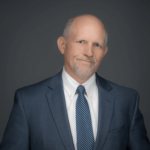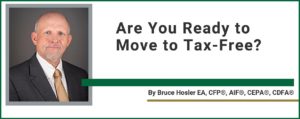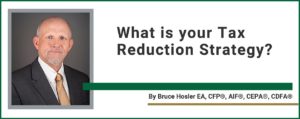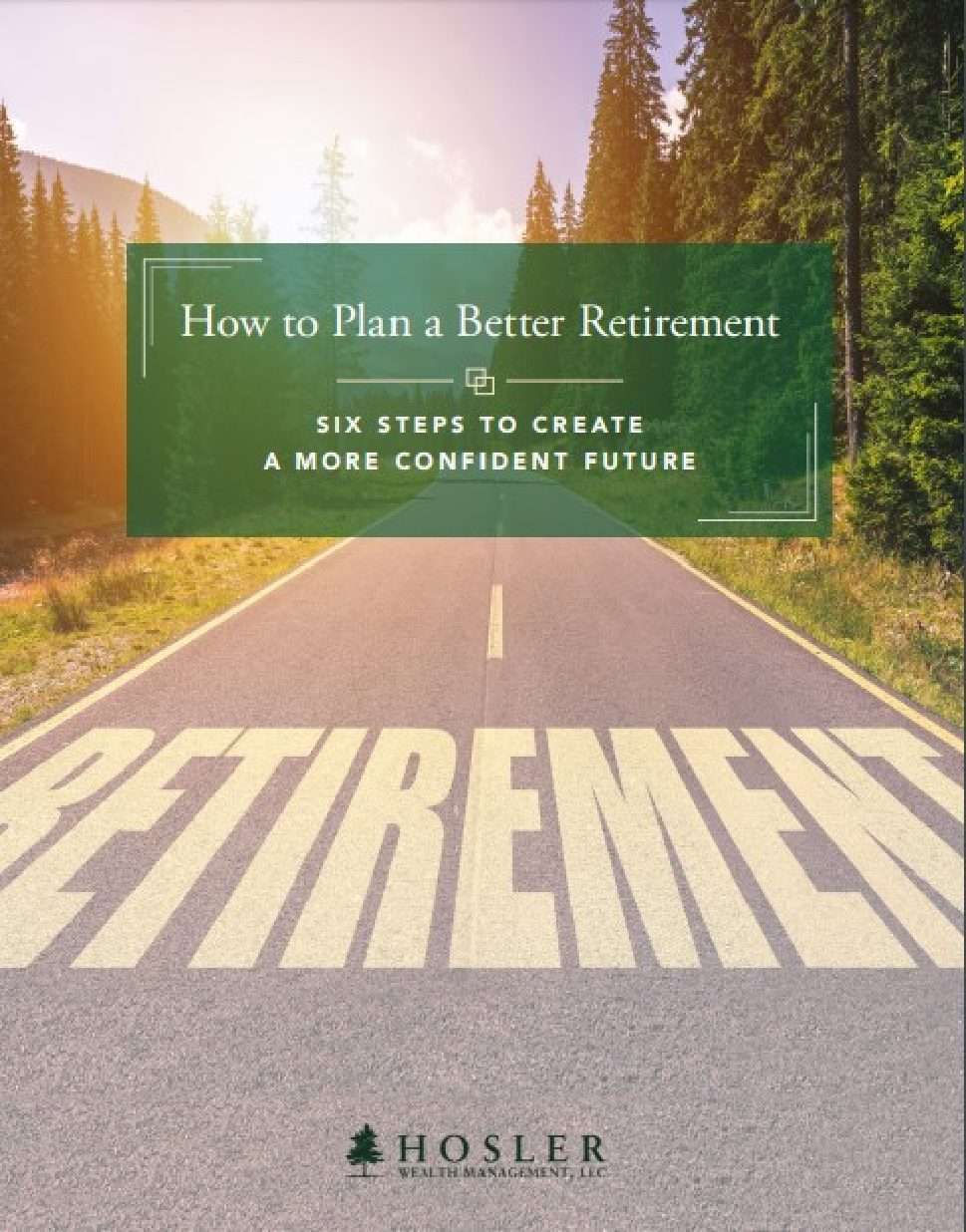You may be familiar with a traditional 401(k) retirement plan, but today Bruce Hosler of Hosler Wealth Management will explain how a Roth 401(k) works, how it’s different, and the benefits associated with it.
In a traditional 401(k), the contributed funds are tax-deferred. Participants don’t pay taxes on the way in; that money doesn’t count toward their annual taxable income. Many clients love this.
However, you do have to pay taxes on the way out. That can be in the form of required minimum distributions or RMD’s. Those earnings count toward your taxable income in retirement, and they could push you over the threshold to have your social security benefits taxed at a higher rate! Bruce breaks down those numbers.
Conversely, with a Roth 401(k), taxes are paid at the time of contribution, the funds grow tax free, and they don’t count as taxable income when withdrawn. So, they themselves can never cause your social security benefits to become taxable. And the annual contribution limits are the same as a traditional 401(k)!
Further, the SECURE Act 2.0, passed in December of 2022, allows for matching contributions to Roth 401(k)s, and they are no longer subject to required minimum distributions.
Bruce explains why he’s a fan of the Roth 401(k), including the ability to save money tax free, the ability to help avoid taxes on social security benefits, flexibility in retirement, and a “bastion of safety” against potentially higher taxes.
For more information about anything related to your finances, contact Bruce Hosler and the team at Hosler Wealth Management.
Call the Prescott office at (928) 778-7666 or our Scottsdale office at (480) 994-7342.
To listen to more Protecting & Preserving Wealth podcast episodes, click here.
Limitation of Liability Disclosures: https://www.hoslerwm.com/disclosures/#socialmedia
Podcast Host

Bruce Hosler is the founder and principal of Hosler Wealth Management, LLC., which has offices in Prescott and Scottsdale, Arizona. As an Enrolled Agent, CERTIFIED FINANCIAL PLANNER™ professional, and Certified Private Wealth Advisor (CPWA®), Bruce brings a multifaceted approach to advanced financial and tax planning. He is recognized as a prominent financial professional with over 27 years of experience and a seven-time consecutive *Forbes Best-In-State Wealth Advisor in Arizona. Bruce recently authored the book MOVING TO TAX-FREE™ Strategies For Creating Tax-Free Retirement Income And Tax-Free Lifetime Legacy Income For Your Children. www.movingtotaxfree.com.
In the Protecting & Preserving Wealth podcast, Bruce and his guests discuss current financial topics and provide timely answers for our listeners.
If you have a topic of interest, please let us know by emailing info@hoslerwm.com. We welcome your suggestions.
*2018-2024 Forbes Best In State Wealth Advisors, created by SHOOK Research. Presented in April 2024 based on data gathered from June 2022 to June 2023. 23,876 were considered, 8,507 advisors were recognized. Not indicative of advisor’s future performance. Your experience may vary. For more information, please visit.
Transcript
Jon “Jag” Gay: Welcome to episode number 21 of Protecting and Preserving Wealth. I am Jon Jag Gay. I am joined as always by Bruce Hosler of Hosler Wealth Management. Bruce, always a pleasure to be with you, sir.
Bruce Hosler: Great to be with you today. Jon, thanks for joining me on this important topic.
Jon: This is a really important one, and that’s the Roth 401(k).
I’m pretty familiar, as I’m sure most our listeners are with the traditional 401(k) from an employer, but today we’re talking about the Roth 401(k).
Bruce: That’s right, Jon. Most of our listeners are gonna be familiar with the traditional 401(k). But I’m pretty confident many of them are not so familiar with the Roth 401(k).
Jon: Okay, now both of them are available in many 401(k) plans. Why would a listener choose to contribute to one versus the other?
Bruce: Let’s start with the traditional 401(k). Most everyone is familiar with the traditional, tax-deferred, 401(k) contribution retirement plan. These types of retirement plans are set up by an employer and they allow the employees the ability to contribute or defer some of their wages into the retirement plan.
Jon: So, if I remember correctly, the employee can deduct the amount they contribute to the retirement plan from their taxable income for that year, right?
Bruce: That’s right. They don’t have to include the 401(k) contribution amount as taxable for that year that they make the contribution.
Jon: So, my experience is that most of our listeners are like gonna like the ability to lower their taxable income each year by contributing to one of these plans.
Bruce: You’re correct. Many people do like to get that tax deduction upfront, but let me tell you, when they start having to take out the required minimum distributions, the RMDs, when they’re retired, m an, a lot of my clients, they don’t like that, and they have to start taking out those funds and paying the taxes on those distributions. They hate it, Jon .
Jon: Yeah, because people forget if you’re not paying the taxes on the way in, you’re gonna have to pay the taxes on the way out, right?
Bruce: Absolutely. And it’s painful.
Jon: I’ve heard that sometimes those RMDs can cause people to have to pay taxes on their social security benefits. How’s that possible?
Bruce: If a couple has had good earnings during their work life and thus they’re more likely to have higher social security benefits, then if they have to start taking a big required minimum distribution, it can cause them to trigger the provisional income calculation and can cause up to 85% of their social security benefits to be included as taxable income in that year.
Jon: Wow. How much money could that mean to a couple in extra taxes in one year, Bruce?
Bruce: Let’s just consider the math on that and how easy it is for a couple to make their Social Security benefits taxable. Let’s say that as a married couple between husband and wife, they have $42,000 in social security benefits, and if 85% of the $42,000 starts to be included in their taxable income, let’s say they’re in the federal tax bracket of 22% and 3% for state.
So, that would give them a total of 25%. That would be $10,500 of additional taxes that they would have to pay each year just because they triggered the provisional income on their social security benefits.
Jon: Bruce, what is the threshold of taxable income that once you get above it, your social security starts getting taxed?
Bruce: It starts at $32,000 as for a married couple, up to $44,000, and once you tip the scale at $44,000, then 85% of your social security benefits will be included in taxable income, and that calculation includes 50% of your social security benefits.
Jon: Yeah, that is scary. So, the RMD on the 401(k)s that a couple owns can trigger that and cause that extra tax on the social security.
Bruce: Let’s say that a husband and wife have both saved diligently into their traditional 401(k)s at work and. they have saved a combined $1 million in 401(k) savings, and if they start taking RMDs of just 4% at age 73, they would have to take a combined RMD amount of $40,000 each year. So, that $40,000 plus 50% of the social security benefit can take them well above the $44,000 threshold to trigger the provisional income and the 85% inclusion of their social security benefits and taxable income.
Jon: That is very eye-opening, Bruce. Now on the flip side, the Roth 401(k), it doesn’t provide the tax deduction up front of lowering the taxable wages for the year, but on the flip side is it doesn’t get taxed when it’s withdrawn. Do I have that right?
Bruce: That’s exactly right. The Roth 401(k) allows our listeners to put the same amounts away into tax-deferred saving as the traditional 401(k), but the distributions when they come out from the Roth 401(k) are tax free. No federal, no state, and most importantly to those in retirement, no inclusion in the calculation of provisional income, so your Roth 401(k) will never make your Social Security benefits taxable.
Jon: So, I wanna make sure I understand this well. A Roth 401(k), much like a Roth IRA, you’re paying the taxes on the way in. It grows tax-free and is taken out tax-free. Now, are the contribution limits the same for Roth 401(k) and a traditional 401(k)?
Bruce: The contributions are exactly the same for both plans. If you’re under 50 years old in 2023, you can contribute $22,500. If you’re 50 years or older, you can contribute $30,000 per year to your plan. Either Roth 401(k) or traditional 401(k).
Jon: Okay, and I heard about the SECURE Act 2.0. It was passed last year, December of 2022. Bruce, am I right in understanding that your employer now has the option of matching your contributions on the Roth side of the 401(k)? And if that’s the case, I’d imagine it’ll help our listeners save even more money in that tax-free Roth 401(k).
Bruce: You’re right, Jon. The SECURE Act has made it so that plans now have the option of matching the employee’s contribution, with the employer match, to the Roth 401(k) side. If the employee requests it and the plan allows it.
It’s not obligated. It’s optional, but I think more and more employers are going to be adopting plan provisions to make this option available to their employees.
Jon: Okay, Bruce, any other big changes to the Roth 401(k) in SECURE 2.0?
Bruce: Jon, there’s a really big one. The Roth 401(k) will no longer have a required minimum distribution.
Prior to this law, taxpayers would have to roll their Roth 401(k) over to a Roth IRA to avoid having RMDs. It’s crazy. The Roth 401(k) still had an RMD requirement, but now, even if you leave your funds in your employer’s Roth 401(k) plan, you won’t ever have to take an RMD from that.
Jon: Bruce, I thought most people don’t like to leave their money in their old employer’s plan. Are there reasons that someone might wanna roll their Roth 401(k) into a Roth IRA after they retire?
Bruce: There are lots of reasons, Jon, avoiding any of the limitations that the 401(k) plan may have and impose on the retired worker is one of the main ones because some of those plan limitations are very limiting.
For example, the ability to select your investment options can provide you with greater diversification in investment vehicles that may not be offered inside your employer’s old retirement plan. For example, I get some people that come in and they wanna move some of their investments into gold or real estate or investments that carry guarantees to protect the account value with floors or buffers or insurance guarantees. Such investments are generally not available inside of 401(k) plans.
Jon: It seems that to me, that you are a big fan of the Roth 401(k). Why are some of these reasons that we’re talking about it today?
Bruce: Jon, here are some of the big reasons I’m a fan. First, the Roth 401(k), if a couple are both working, they can contribute, if they’re over 50 years old, $60,000 a year into this tax-free vehicle.
That is a fantastic benefit.
Jon: Wow.
Bruce: Yeah. Number two, I’m very fearful that we’re gonna be facing much higher tax rates in the US in the next 10 years. These tax-free vehicles will be a bastion of safety for our clients against the much higher tax rates that are coming to our country.
Number three, the funds inside of a Roth 401(k) can potentially protect a couple from having to pay taxes on their social security benefits.
And number four, and this point is important to many people, is they’re likely to already have a good amount of money saved in traditional 401(k)s and traditional IRAs. If they start now saving as much as they can in the Roth 401(k), it’s going to give them an additional bucket of flexible tax-free money to pull from in retirement.
So, when we’re creating that retirement plan, we have an extra bucket of tax-free money. This can be very powerful in creating a better quality of retirement.
Jon: Those last couple points are diametrically opposed to what you talked about with some of the pitfalls of the traditional 401(k) here at the beginning of the podcast. And then something you said a moment ago, Bruce, the second of your four points, the fear that we’re gonna have much higher tax rates in the US.
This isn’t a political discussion. This isn’t left right, red, blue, any of that. This is looking at the facts that we have spent a ton of money to get through COVID and the government’s gonna need to make some more money soon. And again, while we can’t predict the future, we can’t guarantee it. If you look at the writing on the wall, pretty good chance the tax rates are gonna go up.
And this is, like you said, a bastion to protect against that.
Bruce: Absolutely. With the national debt, with the shortfalls in the trust fund for Medicare and Social Security, the government’s gonna be looking to raise revenue and there’s a very very high likelihood that the math is gonna force them to have to raise taxes and not just a little bit, but dramatically, Jon.
Jon: Absolutely. All very powerful reasons we’ve covered today that listeners will wanna start saving in that Roth 401(k). Not everybody. But listeners, to find out if it’s right for them, will wanna come talk to you, right?
Bruce: That’s right. Our clients right now, we’re giving them the advice: save as much as you can in tax-free vehicles that are available to you. And one of the best is the Roth 401(k).
Jon: Bruce, if our clients wanna come talk to you and your team at Hosler Wealth Management, what are the best ways to find you?
Bruce: So, they can reach us on the phone in Prescott at (928) 778-7666. We’re in Scottsdale at (480) 994-7342 and certainly our website is one of the best ways to get ahold of us.
That’s Hosler, https://hoslerwm.com.
Jon: Really important stuff today, Bruce. I learn something every time I talk to you. We’ll talk again soon.
Bruce: Thanks, Jon.
Jon: Securities and advisory services offered through Commonwealth Financial Network® member FINRA/SIPC, a registered investment advisor. Forward looking commentary should not be misconstrued as investment or financial advice. The advisor associated with this podcast is not monitored for comments and any comments should be given directly to the office at the contact information specified.
Any tax advice contained in this communication, including any attachments, is not intended or written to be used and cannot be used for the purpose of 1) avoiding federal or state tax penalties or 2) promoting marketing or recommending to another party, any transaction or matter addressed herein. The accuracy, completeness, and timeliness of the information contained in this podcast cannot be guaranteed.
Accordingly, Hosler Wealth Management, LLC does not warranty, guarantee or make any representations or assume any liability with regard to financial results based on the use of the information in this podcast.
Comments are closed.




